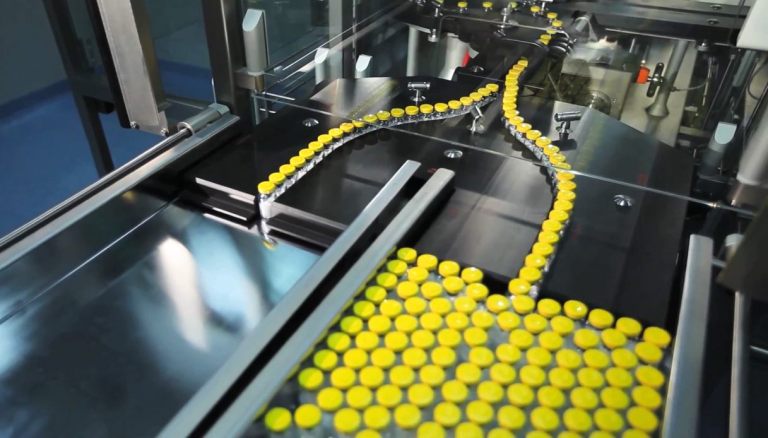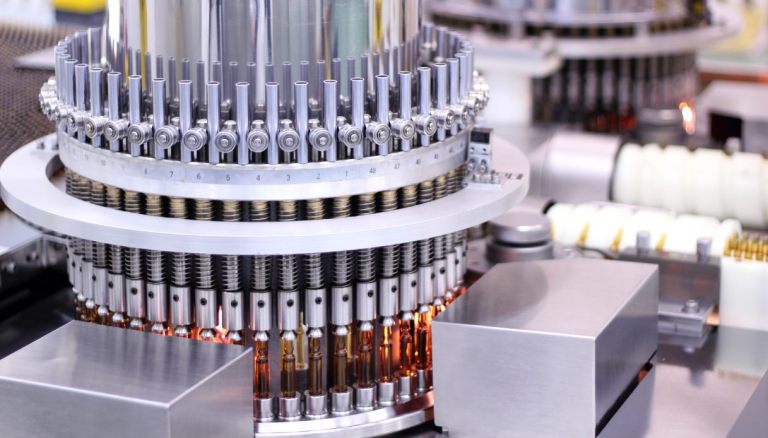In the midst of a global economic crisis that has spared no economic or manufacturing sector, the pharmaceuticals industry is one of the few to have survived. And with the production of anti-Covid vaccines now in full swing, the situation for this industrial sector is set to get even better. No wonder, then, that the outlook for pharmaceutical machinery production is so rosy: according to various forecasts, the market is set to grow in double figures for the next few years.
If the forecasts are fulfilled, the pharmaceutical machinery market will surpass the 200 million annual threshold by the middle of the decade. In a decade (2016-2025), the value of the market has more than tripled, in this scenario robots will play an increasingly important role in the pharmaceutical production chain.
Pharmaceutical machinery passes the 100 million mark in value
According to forecasts made by MarketsandMarkets, 2020 will be a year to remember for the pharmaceutical industry. Not only because of the increased workload resulting from the production of anti-Covid vaccines developed by various pharmaceutical companies. By the end of the year, the market for robots used in complete production and packaging lines will exceed $100 million in value for the first time, rising to $120 million by the end of 2021. An average annual growth rate of 13%, which will probably be confirmed in the next five years.

Value doubled in the next five years
The estimates made by Zion Market Research for the five-year period 2021-2026, as mentioned, are not very different. Net of further increases, average annual growth will be around 13%. According to the experts of the American company specialised in market research, at the end of 2026 the value of the pharmaceutical robot market will exceed the threshold of 200 million dollars, reaching 222.4 million.
An unhindered growth, therefore, that will lead to the doubling of the market value in just five years. As mentioned above, at the end of 2020, the market will exceed the $100 million for the first time. The growth is even more surprising if we compare the forecast at the end of 2026 with the result at the end of 2016, when the pharmaceutical robot market was worth around 65 million dollars. In a decade, therefore, the value of the market has more than tripled.
The role of robots in the pharmaceutical production chain
As the market value increases, the importance of robots in pharmaceutical production sites also increases. Their use makes it possible to speed up and improve repetitive operations such as pharmaceutical packaging, but also to ensure better results in highly specialised operations such as quality control and verification of drug composition. To date, pharmaceutical robots are mainly used for:
Control. The control of medicines is a fundamental operation to ensure product quality. Robots in this sector can detect even the smallest production defect, using high-definition cameras and other sensors to scan tablets and other medicines.
Packaging. The advantages of using robots in medicine packaging are many. First of all, they prevent human operators from being forced to perform repetitive and mechanical actions. In addition, they provide better efficiency and speed, removing possible errors made by human workers.
Laboratory applications. Increasingly, pharmaceutical robots are also being used in research and development laboratories, where they ensure improvements in efficiency and quality.
